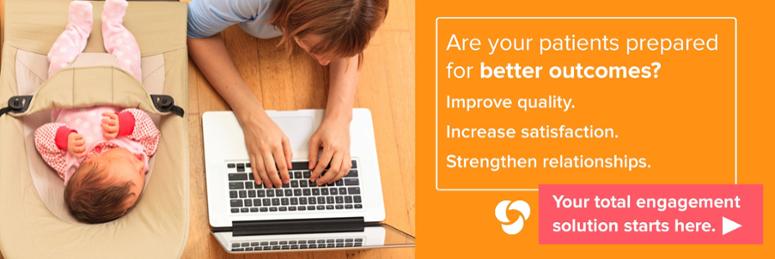What Concerns About This Common Surgery Teach Us About Patient Engagement
The most recent issue of Consumer Reports had some pointed words about hospitals with high rates of Cesarean section deliveries. In an article detailing its evaluation of C-section rates in 1,200 hospitals nationwide, the consumer advocacy journal concludes that, in low-risk pregnancies, the biggest determinant that a woman will have a C-section may be the hospital where she chooses to deliver her baby.
It isn’t the first time an inferred link between C-sections and hospital practice has made headlines. The New York Times ran an opinion piece in January saying the same thing.
About 1 in 3 newborns (nearly 1.3 million babies) are delivered by C-section in U.S. hospitals each year. The surgery has been the most commonly performed operating room procedure here for almost a decade, according to the Agency for Healthcare Research and Quality (AHRQ).
C-section rates have risen dramatically over the past 45 years, from 5% in 1970 to 20% in 1995 to the current 32.2%, according to the National Center for Health Statistics. Many are medically necessary and either planned in advance (for pregnancies involving multiples, hypertension, heart disease or diabetes) or unplanned but required for a fetus in breech position or cases of fetal or maternal distress during labor.But too often—some reports say at least half the time—C-sections occur in low-risk situations. Published statistics indicate that C-section rates currently vary widely by hospital—even among hospitals in the same region. In California, for example, C-sections performed in low-risk delivery situations in 2013 ranged from 11.2% to 68.8%.
All surgeries carry some risk. And while C-sections are life-saving in high-risk situations, health officials note that these surgeries can lead to serious complications for mothers, including hemorrhage or infection.
The World Health Organization has long stated that, ideally, a hospital’s C-section rates should be at 10%–15%. With the U.S. rate about 3 times that, the federal Department of Health and Human Services has set a 2020 goal to reduce C-section rates in low-risk births by 10%.
C-sections have been the most commonly performed surgeries in the U.S. for almost a decade, according to the Agency for Healthcare Research and Quality (AHRQ).
Why are C-sections in low-risk situations so common here? The reasons given by obstetricians interviewed on the topic over the years include:
- a mother wanting to avoid labor pain or potential complications (such as incontinence) from vaginal childbirth
- an obstetrician ordering the procedure out of compassion for a tired, distraught mother experiencing an exceptionally long labor
- early response to high-tech monitors indicating an elevated fetal heart rate (which may or may not be due to fetal distress)
VIDEO: Find out why educated patients are better partners in their care.
As negative headlines about C-section rates reach expectant families, hospitals competing for business and higher patient satisfaction should be concerned. But they have a secret weapon at their disposal—the patients themselves.
Educating expectant parents—especially through the digital mobile connections this generation prefers—about when C-sections are medically necessary and when they’re not, the risks involved and efforts to reduce C-section rates will lead to smarter, more confident and more informed patients.
Providing this education during pregnancy also creates opportunities for patients to talk about the potential for a C-section and expectations around this procedure with their healthcare providers—another way to boost patient confidence, outcomes and, ultimately, satisfaction. Along the way, it just might help reduce unnecessary Cesarean sections.
Related: New moms report getting inconsistent–or worse, no–health advice about pregnancy. How to fix it.









